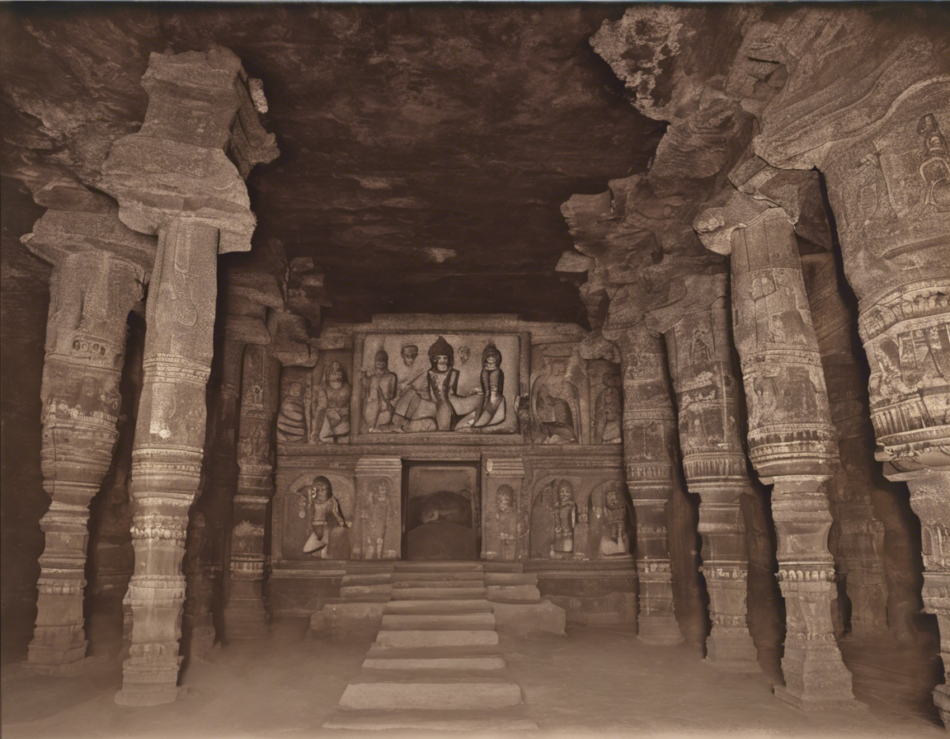India is a land of rich cultural heritage, with hidden gems waiting to be explored at every turn. One such treasure trove of history and art is the Ajanta Caves. Nestled amidst the rugged Sahyadri Mountains in Maharashtra, these caves are a testimony to the exquisite craftsmanship of ancient artists. Dating back to the 2nd century BCE, the Ajanta Caves are a UNESCO World Heritage Site, renowned for their stunning rock-cut caves and intricate murals. Let’s dive into the wonders of Ajanta Caves and unravel the mysteries they hold.
History and Significance
The Ajanta Caves comprise a complex of 30 rock-cut caves, showcasing Buddhist art and architecture. Carved out of solid rock, these caves served as monasteries and prayer halls for Buddhist monks. The caves were discovered in the 19th century by a British officer named John Smith, and their historical and artistic significance has since captured the imagination of the world.
Architectural Marvels
The caves at Ajanta are a blend of Chaityas (prayer halls) and Viharas (monasteries), each adorned with exquisite sculptures and paintings. The intricate carvings on the cave walls depict scenes from the life of Buddha, Jataka tales, and various mythological narratives. The architectural precision and artistic finesse displayed in these caves are a testament to the skill and craftsmanship of the ancient artists.
The Paintings
The most remarkable feature of Ajanta Caves is the mural paintings that adorn the walls and ceilings of the caves. Created using natural pigments and vegetable dyes, these paintings have retained their vibrancy and beauty over the centuries. The themes of the paintings range from religious scriptures to daily life anecdotes, offering a glimpse into the cultural ethos of ancient India.
Preservation Efforts
Over the years, the Ajanta Caves have faced numerous challenges, including natural wear and tear, vandalism, and environmental factors. However, concerted efforts by archaeological departments and conservationists have ensured the preservation of these priceless treasures. Conservation projects have been undertaken to protect the delicate paintings and sculptures, thereby ensuring that future generations can continue to marvel at the beauty of Ajanta.
Visitor Information
If you are planning a visit to Ajanta Caves, here are some key details to keep in mind:
- Location: The caves are situated near Aurangabad in Maharashtra, India.
- Timing: The caves are open to visitors from 9 am to 5:30 pm, with Mondays being closed.
- Entry Fee: Entry fee varies for Indian and foreign tourists, with additional charges for cameras.
- Guided Tours: Opting for a guided tour can enhance your experience by providing insights into the history and significance of the caves.
Exploring the Surroundings
Apart from the caves, the vicinity of Ajanta offers a plethora of attractions for tourists. From the historic Ellora Caves to the scenic beauty of the Sahyadri Mountains, there is much to explore and experience in this culturally rich region. Don’t miss the opportunity to delve into the local cuisine and craft traditions that are an integral part of the Ajanta experience.
Conclusion
The Ajanta Caves stand as a testament to India’s glorious past and artistic legacy. These ancient rock-cut caves are not just a site of historical significance but also a visual treat for art aficionados and history buffs alike. Exploring the wonders of Ajanta Caves is a journey back in time, a glimpse into the intricate tapestry of India’s cultural heritage that continues to captivate and inspire.
Frequently Asked Questions (FAQs)
Q1: How old are the Ajanta Caves?
A1: The Ajanta Caves date back to the 2nd century BCE, with some caves being even older.
Q2: Are photography and videography allowed inside the caves?
A2: Photography is allowed in some caves with the purchase of a camera ticket, while videography is restricted in most caves.
Q3: Can visitors hire guides at Ajanta Caves?
A3: Yes, visitors can hire guides at the entrance of the caves for a more insightful tour experience.
Q4: Are there any accommodations near Ajanta Caves?
A4: There are hotels and guesthouses available in Aurangabad, which is the closest city to Ajanta Caves.
Q5: What is the best time of the year to visit Ajanta Caves?
A5: The winter months from October to March are considered the best time to visit Ajanta Caves due to the pleasant weather.
Q6: Are there any restrictions on clothing for visitors to the caves?
A6: Visitors are advised to wear modest clothing covering their shoulders and knees as a mark of respect to the religious significance of the caves.
Q7: Can elderly or differently-abled visitors access the caves?
A7: While some caves have steep steps and may be challenging for elderly or differently-abled visitors, there are accessible routes to certain parts of the site.
Q8: Is there a cafeteria or dining facility near the caves?
A8: Yes, there are dining options near the Ajanta Caves where visitors can enjoy local cuisine and refreshments.
Q9: Are there any specific rules or regulations that visitors need to follow at Ajanta Caves?
A9: Visitors are required to maintain silence inside the caves, refrain from touching the paintings, and follow the instructions of the guides and authorities.
Q10: How long does it take to explore all the caves at Ajanta?
A10: It typically takes around 3-4 hours to explore the major caves at Ajanta, but visitors can spend more time depending on their interest and pace of exploration.
